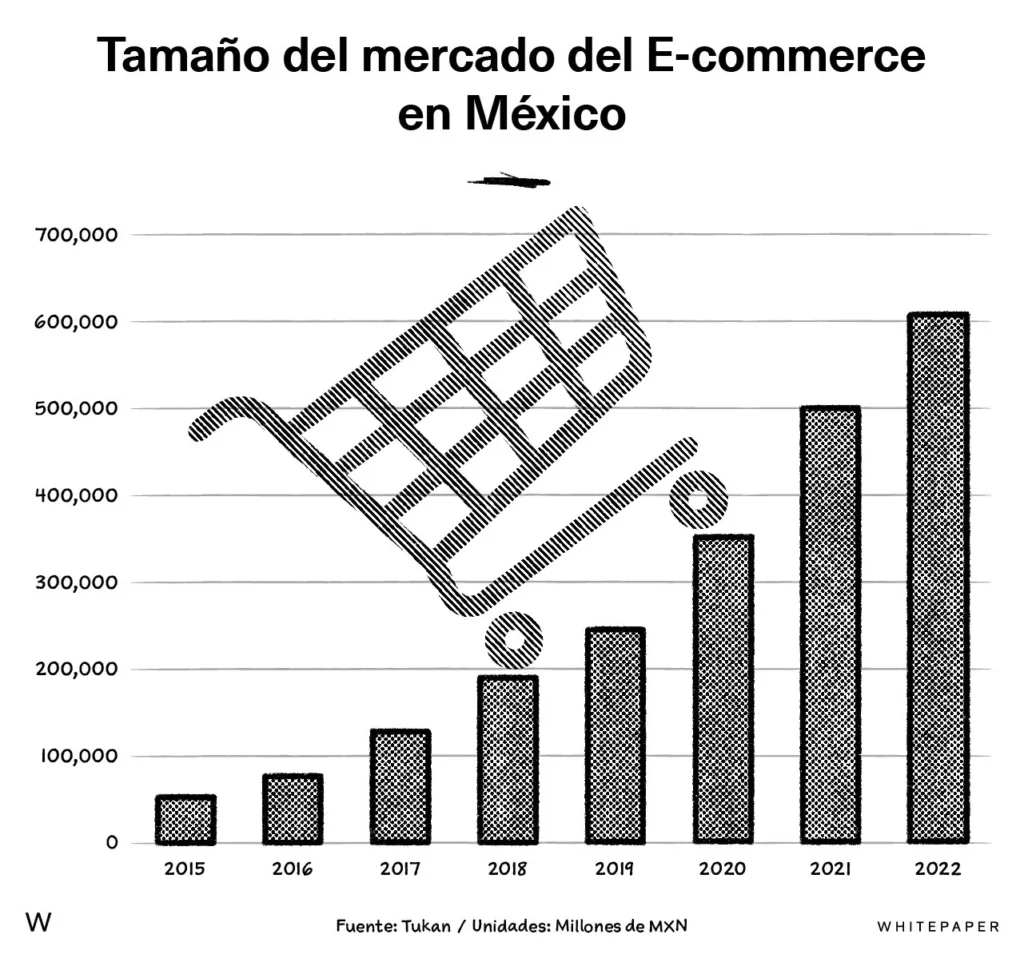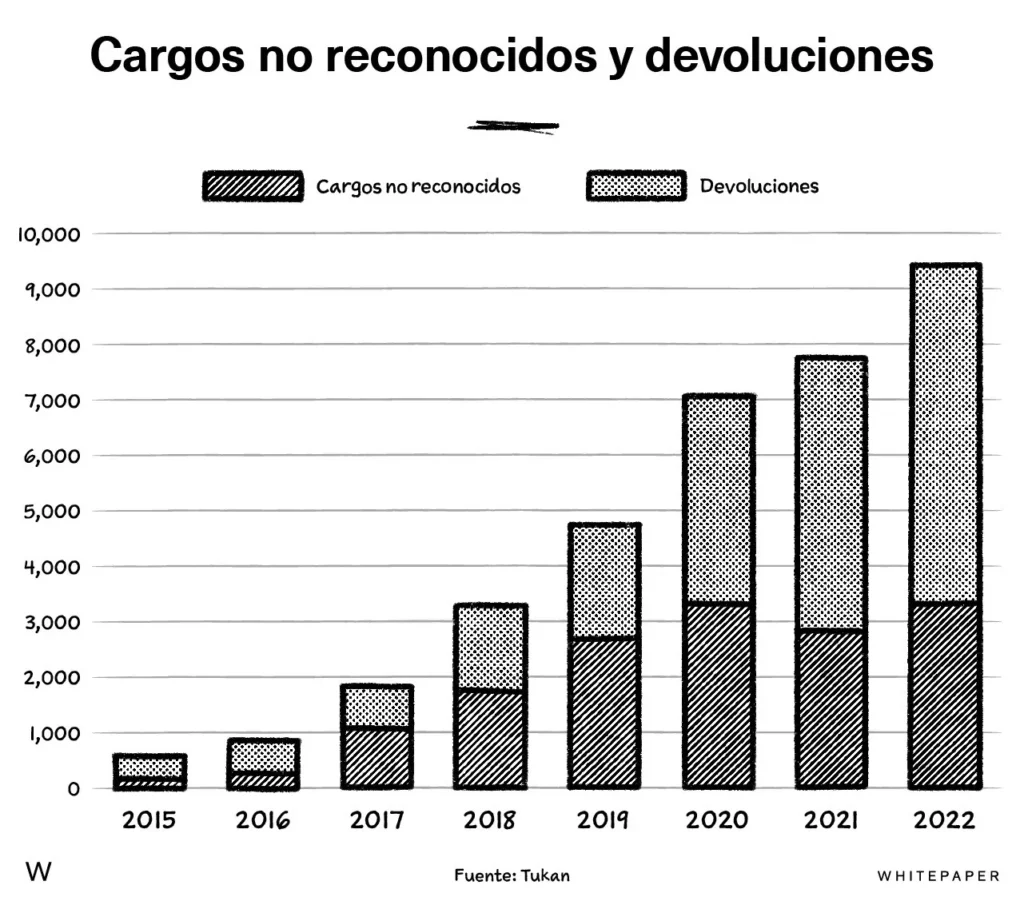In Mexico, ecommerce has surpassed $600 billion pesos in authorized sales in 2022, marking a 23% increase from the previous year, according to Tukan and Whitepaper data service. The INEGI reports that ecommerce contributes significantly to the national GDP, accounting for around 6%.
You may also be interested in reading: Use of fintech apps grows 54% in Latin America
Online transactions face various challenges, including common reasons for payment rejections such as customer information errors, bank rejections to prevent fraud due to unusual transactions, and transactions not permitted by card type. Addressing these issues is crucial to enhance the online shopping experience.

The CONDUSEF report indicates a decline in the rate of unrecognized charges, decreasing from 1.1% in 2020 to 0.5% in 2022. However, the value of unrecognized purchases or returns still exceeded $9 billion pesos in 2022.

The most successful players
Among online retailers, Mercado Libre, Amazon, and Walmart Mexico lead in terms of sales volume. Mercado Libre, an Argentine digital commerce platform present throughout Latin America, generated over $1.86 billion USD in revenue in Mexico in 2022. Other popular online stores for Mexican consumers include Liverpool for clothing and footwear and Coppel during holiday shopping. Nevertheless, Amazon and Mercado Libre continue to dominate across these sectors.
Ecommerce has become the preferred purchasing channel for millions of consumers in Mexico and Latin America. In 2022, the value of e-commerce in Mexico exceeded $33 billion USD, making it the second-largest online market in the region, surpassed only by Brazil.

Looking ahead, e-commerce holds significant promise. Analysts from Statista project substantial growth in the online food segment, with revenues potentially doubling from US$330 billion in 2023 to US$620 billion in 2027. However, the revenues from this segment won’t come close to the three major categories. By 2027, sales in electronics, toys, hobbies, DIY, and fashion are expected to surpass the trillion-dollar mark. China, the United States, and Japan are currently and are expected to continue leading the market in terms of revenue.
You may be interested: INI, an Argentine fintech specializing in offline payments, has received an investment from Kamay Ventures
Why is it relevant for ecommerce and fintech startups?
- The increase in authorized sales and share of national GDP demonstrates the potential and market demand in this region.
- As ecommerce increases, more services will need to be implemented to provide secure and efficient payment methods, improve the online shopping experience, and offer accessible financial services for consumers and businesses.
- Collaboration between ecommerce and fintech startups with established players in the region, such as Mercado Libre and Walmart, can open doors to expand their reach and access a wider user base.
- The increase in authorized sales and share of national GDP demonstrates the potential and demand for the market in this region.
We recommend: Use of fintech apps grows 54% in Latin America
To read the information in detail, visit: White Paper







